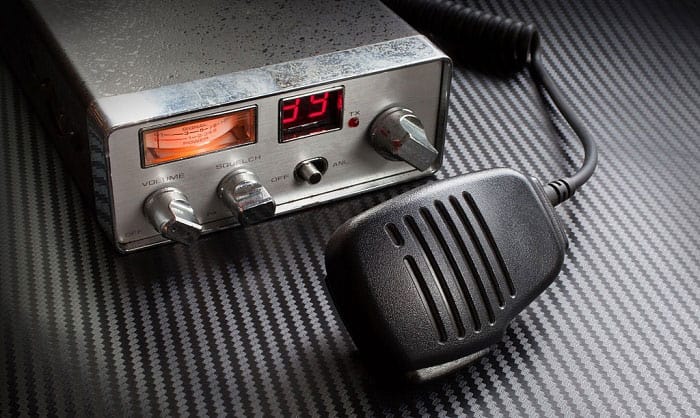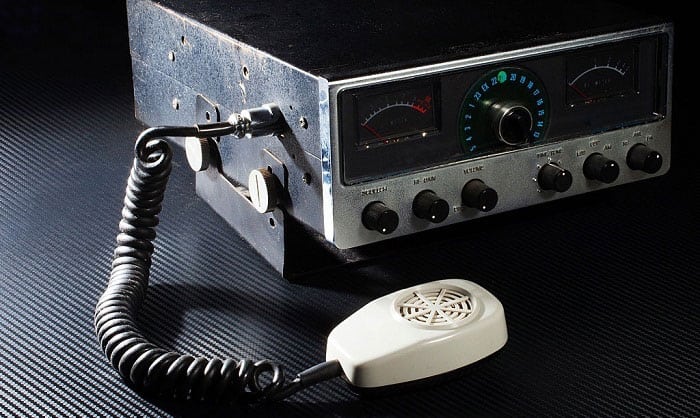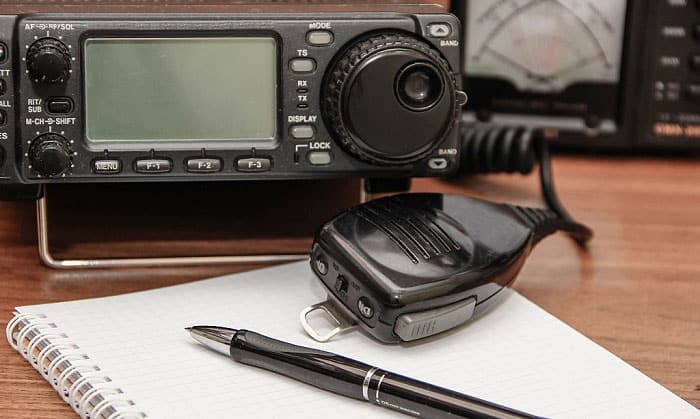Have you ever wondered “what does ham radio stand for?” In fact, the term is relatively new to the vast majority of people in the world. According to statistics, around the world today, only about 3 million people use this device.
In the article below, we will explore clearly the issues related to ham radios, including ham radio meaning and usage, why is it called ham radio, and license to use ham radio.
Table of Contents
What is a Ham Radio?
Previously, only those passionate about radio were interested in radio to know the concept of “ham radio,” also known as “amateur radio.” But nowadays, as it is more and more popular, many newbies want to learn more about it.
Amateur radio, also known as ham radio, refers to radio frequency bands for non-commercial purposes: personal entertainment, message exchange, radio engineering experiments, training, and emergency contact information.
Amateur radio is a passionate hobby that attracts many people on all continents. The term “amateur” is used to identify those who are interested in radio engineering for personal and non-profit purposes and to distinguish ham radio from commercial radio, television, stations serving public safety (such as police and fire), or professional two-way service stations (such as for maritime, aviation, taxi, etc.)
Amateur radio activities are established under the International Telecommunication Regulations adopted by the International Telecommunication Union (ITU).
Governments license radio stations with a call sign and prescribe technical characteristics and regulations for amateur radio operations.
Radio amateurs can transmit sound, text, images, and data in a specially allocated radio frequency band that allows communication worldwide or even into space. The International Amateur Radio Union (IARU), which is divided into three regions, coordinates amateur radio activity.
What Does Ham Stand for in Ham Radio?
The HAM acronym was first used in 1908 by several members of the Harvard Radio Club, including ALBERT S. HYMAN, BOB ALMY, and POOGIE MURRAY, who operated a wireless radio station.
At first, they called their station “HYMAN-ALMY-MURRAY,” but because the name was too long, they changed it to “HY-AL-MU” for convenience. In early 1901, they decided to change it to “HAM” to avoid having almost the same name as a Mexican ship. Since then the ham radio acronym came about.
History Of Ham Radios
From the end of the 19th century, amateur radio stations began to exist.
The advent of amateur radio has been associated with the development of radio technology, and radio enthusiasts with various design and construction experiments have made essential contributions to the development of radio technology, scientific, technical, industrial, and social services.
Research by amateur radio operators has paved the way for wireless communication methods, judicious use of frequency bands, and new industries, such as cell phones & satellite technology. For example, Jack S. Kilby won the Nobel Prize for inventing the integrated circuit (IC) and was also an amateur radio operator.
Amateur radio users have also saved countless lives, especially in emergencies.
For example, in 2004, when there was a terrible earthquake and tsunami in Asia that killed 30,000 people and made millions homeless, the Sri Lankan prime minister could not connect with the outside world. Even the satellite phones ran out of batteries. The only way of communication at that time was through amateur radio.
Operational Forms of Amateur Radio
- Many people use ham radio for charity purposes, medical rescue,, or social purposes. These people can be students, doctors, politicians, or drivers, and they must pass a professional exam to obtain a license from the FCC (Federal Communications Commission).
- Many astronauts are also amateur radio users, such as engineer Doug Wheelock with the call sign KF5BOC, who, during Expedition 24, used a Kenwood TM-D700E transceiver to communicate.
- Ham radio can operate right on the band that broadcasts AM to the microwave region in the gigahertz range.
- Ham radio frequencies are also used for amateur television, in which camcorders and memory devices help radio amateurs send video clips to their audience. Thanks to a wide bandwidth and transmission stability, amateur television signals can travel 30 to 100km.
- In addition, SSTV technology (used by ham radio operators) allows scanning and transmission of images by amateur radio transceivers, and is instrumental in restoring communication in disaster areas.
- The two most common methods for voice transmission in amateur radio are frequency modulation (FM) and single-sideband (SSB) FM provides a high-quality audio signal, while SSB communicates better over long distances when bandwidth is limited.
- Radiotelegraphy using Morse code (also known as “CW”) was developed by Samuel Morse in the 19th century. Although digital computer technology is now used in place of CW in commercial and military applications, many amateur radio operators still prefer the CW mode, especially over the shortwave bands.
- Personal computers encouraged digital methods such as radioteletype (RTTY) that previously required many cumbersome mechanical devices. Digital modes like the PSK31 enable low-power real-time communication over the shortwave range.
- Echolink, which uses VoIP technology, allows ham radio users to communicate with each other over the Internet. Moreover, IRLP has enabled communication via Internet connection over a broad area.
- A mode called FSK441, which uses software like WSJT, is used to communicate when the signal is weak, such as when the information is reflected by meteors, meteorites, or the lunar surface.
Uses Of Ham Radio
By using ham radio, people can communicate anywhere they want, whether from home or the top of a mountain without internet or phone signal.
In the face of natural disasters, typically, communication channels will be interrupted, and ham radio will become your savior to aid emergency communication efforts with public service agencies.
Ham radio is not only used worldwide, in every geographical location on Earth, but also beyond outer space. Ham radio can connect from the ground and communicate with astronauts on the International Space Station, through satellites in space, and receive signals from the moon and transmit it to Earth.
Through national or international organizations, amateur radio operators worldwide have had many competitions with different prizes such as telegraphy competitions, island broadcasting (Island on the Air), or DX competitions.
Ham Radio Today
Today, ham radio is operated and regulated by the International Amateur Radio Union (IARU), which has 3 regions: the Americas; South and East Asia and the Pacific; Europe, Middle East, Africa, and Northern Asia.
Including:
- IARU Region 1 (Europe, Africa, Middle East,…) has about 400,000 stations.
- IARU Region 2 (Americas) has approximately 830,000 stations.
- IARU Region 3 (South & East Asia and the Pacific) has approximately 750,000 stations.
License to Operate Ham Radio Legally
As mentioned above, an amateur radio operator needs a license from the FCC to operate legally. In the United States, there are three types of licenses with a term of up to 10 years, including:
- Technician License: Operation level in North America
- General License: The level is allowed to work on all bands and modes worldwide with certain privileges
- Amateur Extra License: Full privilege level on all bands and modes worldwide
Conclusion
Above are the answers related to the question “what does ham radio stand for?” From them, it can be seen that ham radio plays an important role in daily life.
For those who are intending to study this field, you do not need to worry too much about the cost because you can take courses and get a degree for as little as 40 dollars. If you want to own a basic communication device, it will cost about 200 dollars.

Hi, I am Amaro Frank – the Wind Up Radio’s content editor and writer. Working with Adam is so much fun, as his stories and experiences enrich my knowledge about radio communications and radio accessories. My main tasks in Wind Up Radio are building content and generating great articles on different topics around radio accessories.




